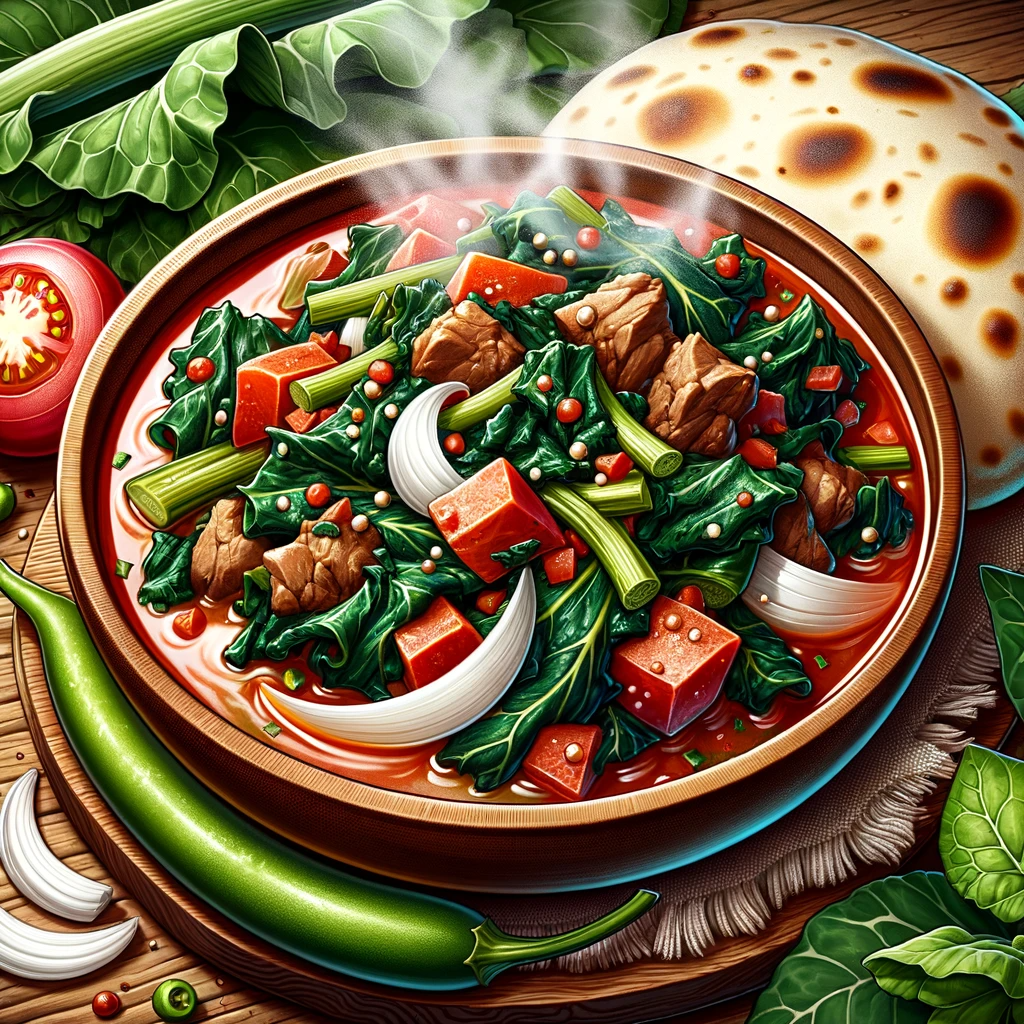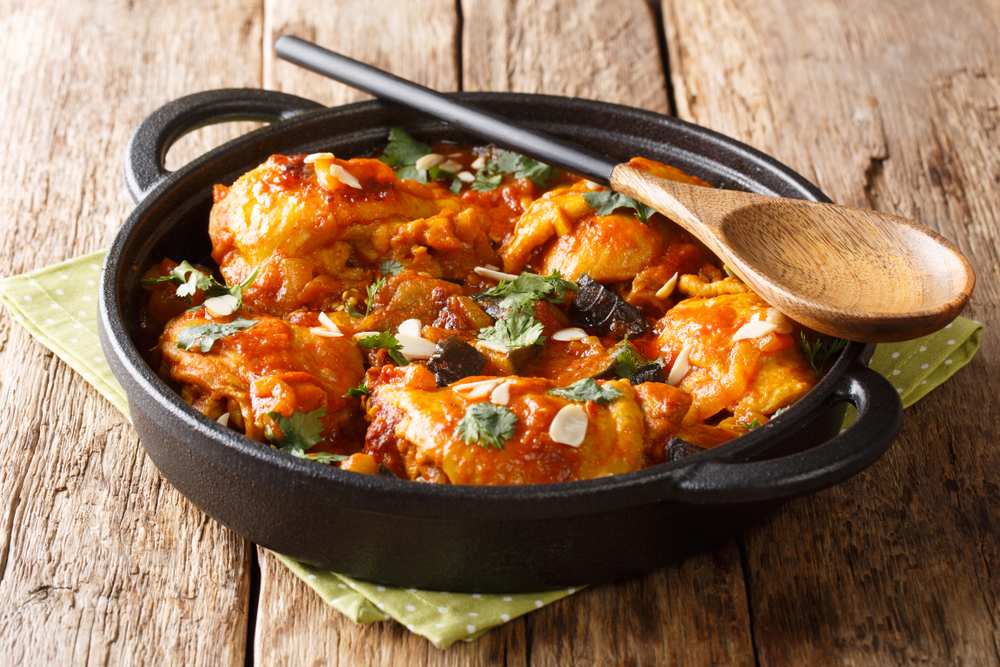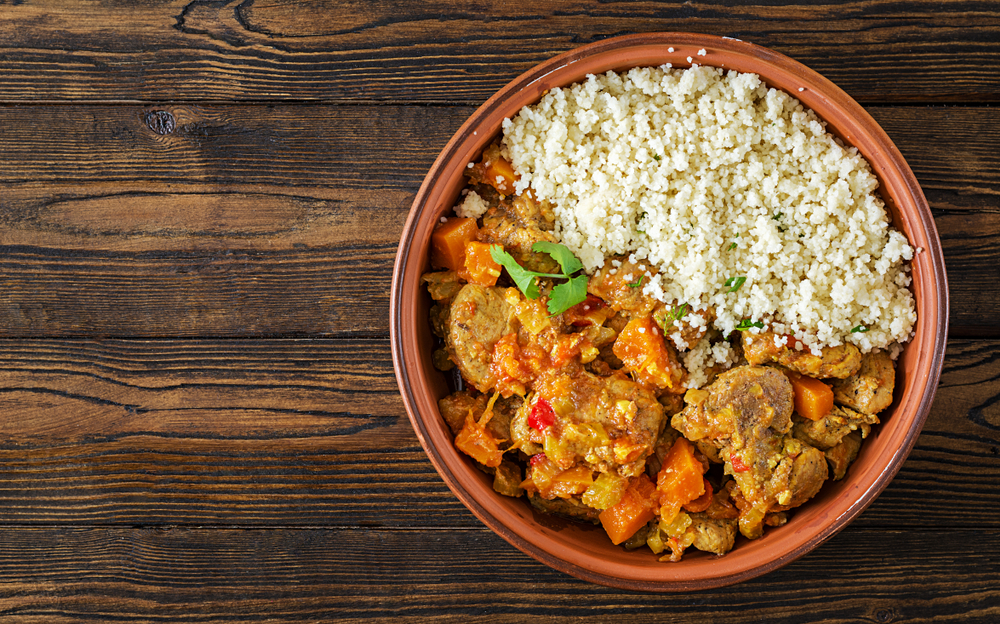Understanding Authentic African Stews
African stews are a celebration of flavors, culture, and history. These stews, varied and deeply flavorful, have evolved over centuries, influenced by indigenous traditions, trade routes, and even colonial influences. Let’s dive deeper into what makes these stews a culinary treasure.
The History of African Stews
Stews have always been a cornerstone of African cuisine. The word ‘stew’ might conjure a singular image, but in Africa, there’s a vast array of stews, each reflecting the unique cultural and geographic identity of its region. From the spicy groundnut stews of West Africa to the aromatic Tagines of North Africa, these dishes tell tales of ancient trade routes, local agriculture, and family traditions.
The art of stew-making in Africa can be traced back thousands of years. Ingredients like okra, native to West African forests, have been used in stews long before they gained popularity in other parts of the world. Trade with other continents introduced new ingredients into the African culinary palette, like the chili peppers from the Americas, which soon became integral to many African stews.

Key Ingredients in Authentic African Stews
While each African stew boasts its unique blend of ingredients, certain staples define this culinary genre:
- Meats and Fish: From tender goat meat to fresh fish, protein forms the base of many stews, cooked to melt-in-the-mouth perfection.
- Vegetables: Ingredients like okra, spinach, and eggplant not only add nutritional value but also lend texture and depth to the stews.
- Legumes: Beans, lentils, and chickpeas often serve as both protein and thickening agents, making stews hearty and filling.
- Spices and Herbs: The soul of African stews, spices like cumin, coriander, and cardamom, combined with herbs like thyme and bay leaves, create aromatic masterpieces. The Scotch bonnet pepper, a favorite in many regions, introduces a fiery kick.
- Base Liquids: Depending on the region and recipe, stews may use a base of tomatoes, groundnuts (peanuts), or even coconut milk, each lending a distinctive taste and consistency.
Understanding the key ingredients in African stews is like holding a map to the continent’s diverse cultures and histories. Whether you’re a culinary enthusiast or a casual cook, diving into the world of authentic African stews promises a delightful gastronomic journey.
Choosing the Right Type of African Stew

Just like the diverse landscapes and cultures of Africa, its stews also come in a variety of flavors and styles. Picking the right stew often depends on personal tastes, available ingredients, and dietary requirements. Here’s a closer look:
Regional Varieties
African cuisine is a vast umbrella, with each region boasting its unique stews:
- West Africa: Known for its hearty and spicy stews like the peanut-infused Groundnut Stew, and the vibrant Palm Nut Stew. Often, these stews are paired with staples such as fufu or jollof rice.
- North Africa: Here, stews take on an aromatic twist, with dishes like the Tagine – a slow-cooked savory stew with meat, fruits, and spices, named after the earthenware pot it’s cooked in.
- East Africa: Coastal influences and spices dominate, with dishes like the coconut-rich Swahili Chicken Curry.
- South Africa: Local stews, often referred to as Potjiekos, are slow-cooked in a round, cast-iron pot over coals.
Your choice might be influenced by the ingredients at hand or a specific regional flavor you’re craving.

Meat-based vs. Vegetarian
While many traditional African stews feature meat or fish, there’s no shortage of vegetarian and vegan options that are just as flavorful:
- Meat-based Stews: Often use ingredients like chicken, beef, lamb, or fish. The meat is usually marinated and slow-cooked to infuse flavors.
- Vegetarian Stews: Dishes like the Ethiopian Misir Wat, a spicy red lentil stew, or the West African Okra Stew are entirely plant-based but don’t skimp on taste or heartiness.
With the rising trend of vegetarianism and veganism, many traditional meat-based recipes are now adapted, ensuring everyone can relish the flavors of Africa.
Preparing for Your African Stew
Before diving into the cooking process, ensuring you have the right ingredients and tools will set you up for success:
Sourcing Ingredients
For an authentic taste, sourcing the right ingredients is crucial. Here’s how:
- Local Markets: Many cities have African or international grocery stores where you can find specific spices, grains, or vegetables.
- Online Stores: Websites dedicated to African or international cuisine might stock hard-to-find items and deliver them to your doorstep.
- Substitutions: If you can’t find a specific ingredient, there are often close substitutes. For example, pumpkin leaves can be replaced with spinach in many West African recipes.

Essential Cooking Tools
The right tools ensure your stew cooks perfectly:
- Clay or Earthenware Pots: Especially for North African recipes, these pots provide even heat distribution and unique flavor infusion.
- Cast Iron Pots: Ideal for slow-cooking, these retain heat well and are great for dishes like Potjiekos.
- Wooden Spoons: For stirring and ensuring ingredients don’t stick to the pot.
- Mortar and Pestle: Perfect for grinding fresh spices to unlock their flavors.
While traditional tools add an authentic touch, modern kitchen tools like pressure cookers can also be used, especially if you’re short on time.

Step-by-Step Guide to Making Authentic African Stews
The magic of African stews lies not just in the ingredients but also in the way they’re prepared and presented. Let’s delve into a step-by-step approach to creating these culinary masterpieces:
Pre-cooking Preparations
Like all great dishes, African stews thrive on preparation:
- Marinating Meats: Marinating your choice of meat with spices, herbs, and sometimes acidic ingredients like lemon juice or tomatoes ensures deeper flavor infusion. Depending on the recipe, marinating can range from a few hours to overnight.
- Preparing Vegetables: Wash, peel, and chop vegetables as required. Some stews benefit from chunky vegetables, while others require finely chopped or blended ingredients.
- Preparing Spices: Freshly ground spices always elevate a dish. Use a mortar and pestle or grinder to release their aromatic oils.
Cooking Techniques and Tips
While each stew has its nuances, some universal techniques and tips can elevate your stew to the next level:
- Layering Flavors: Start by sautéing onions, garlic, and ginger. As they soften, introduce spices to the pot, followed by main ingredients like meats or legumes.
- Slow Cooking: The essence of many African stews lies in their slow-cooked nature. This allows flavors to meld and ingredients to tenderize.
- Consistency: Some stews are best enjoyed thick, while others have a soupier consistency. Adjust with stock or water, and remember that some stews thicken as they cool.
- Taste and Adjust: Always taste your stew as it cooks, adjusting spices or salt as needed.
Serving and Presentation
The beauty of a dish is magnified by its presentation:
- Serving Vessels: Traditional clay pots or bowls enhance the authenticity of the dish.
- Garnish: Fresh herbs, a sprinkle of seeds, or a splash of vibrant oil can add color and freshness to the stew.
- Accompaniments: Always serve with traditional sides like Fufu, Injera, or rice to make the meal complete.
Pairing Your African Stew
Like a symphony, the right accompaniments can elevate the experience of relishing an African stew:
Best Sides for African Stews
African stews are rarely eaten on their own. Here are some beloved sides:
- Fufu: A starchy accompaniment, it’s perfect for scooping up thick stews.
- Jollof Rice: A fragrant, tomato-based rice dish, it pairs wonderfully with lighter stews.
- Injera: An East African sourdough flatbread, its spongy texture soaks up stews deliciously.
- Ugali: A maize-based staple, it complements a variety of stews.

Recommended Drinks
To wash down the rich flavors, here are some beverages:
- Palm Wine: A traditional fermented drink, it’s both sweet and tangy.
- Ginger Beer: A non-alcoholic beverage, its spicy kick complements many stews.
- Hibiscus Tea: Known as ‘Bissap’ in parts of West Africa, it’s a refreshing counter to spicy stews.
- South African Wines: If you’re into pairing with wines, some South African reds can be an excellent match for meaty stews.
Storing and Reheating Your African Stew
African stews, like many other dishes, often taste even better the next day. However, proper storage and reheating are crucial to maintain their quality and flavor.
Best Practices for Storage
Ensuring your stew stays fresh and safe to consume is essential:
- Cooling Before Storing: Allow your stew to reach room temperature before transferring to the refrigerator. This prevents the buildup of condensation, which can affect the texture and taste.
- Airtight Containers: Use glass or BPA-free plastic containers with tight-fitting lids to prevent moisture loss and contamination.
- Freezing: If you’ve made a large batch, consider freezing portions for later use. Remember to label with the date to track freshness.
- Shelf Life: Refrigerated stews are best consumed within 3-4 days, while frozen stews can last up to 3 months.
Reheating Without Losing Flavor
Reheating your stew properly ensures it retains its deliciousness:
- Thawing: If frozen, allow the stew to thaw in the refrigerator overnight for best results.
- Gentle Reheating: Heat on a low to medium setting, stirring occasionally to ensure even heating and preventing it from sticking to the pot.
- Avoid Microwaving: While convenient, microwaving can unevenly heat the stew and alter its texture. If you must use a microwave, do so in short intervals, stirring in between.
- Check Before Serving: Ensure the stew is heated through and taste to adjust seasonings if needed.
FAQs about Authentic African Stews
Delving into the world of African stews can raise a few questions, especially if you’re trying them out for the first time. Here are answers to some common queries:
Adapting Recipes for Dietary Restrictions
Can you enjoy African stews with dietary restrictions? Absolutely:
- Vegan/Vegetarian: Replace meat with plant-based proteins like lentils, chickpeas, or tofu. Many traditional stews already have vegan or vegetarian versions.
- Gluten-Free: Ensure any thickeners or accompaniments like bread are gluten-free. Opt for maize-based sides like Ugali or use gluten-free flours for thickening.
- Low-Fat: Reduce the amount of oil or use healthier oils. Opt for leaner cuts of meat or increase the vegetable content.
Spicing it Right
Adjusting the heat level in your stew is easier than you might think:
- Heat Levels: African stews can range from mild to fiery hot. Adjust the number of chili peppers or use milder varieties to suit your palate.
- Tasting as You Go: Always taste your stew as you add spices, ensuring you achieve the right balance without overpowering the dish.
- Neutralizing Excessive Heat: If your stew turns out too spicy, adding a bit of dairy like yogurt or coconut milk can help tone it down.
Check out our comprehensive guide to the world of African Spices!
Embracing the Warmth of African Cuisine
Authentic African stews are more than just meals; they are a testament to the continent’s rich history, diverse cultures, and unparalleled culinary artistry. From sourcing the right ingredients to perfecting the cooking techniques, every step is a journey that pays homage to age-old traditions. Whether you’re a novice exploring African cuisine for the first time or a seasoned chef looking to refine your skills, the essence lies in savoring the process as much as the final dish. As you embark on this culinary adventure, remember to adapt, experiment, and most importantly, enjoy the symphony of flavors that African stews bring to the table. Bon appétit!
